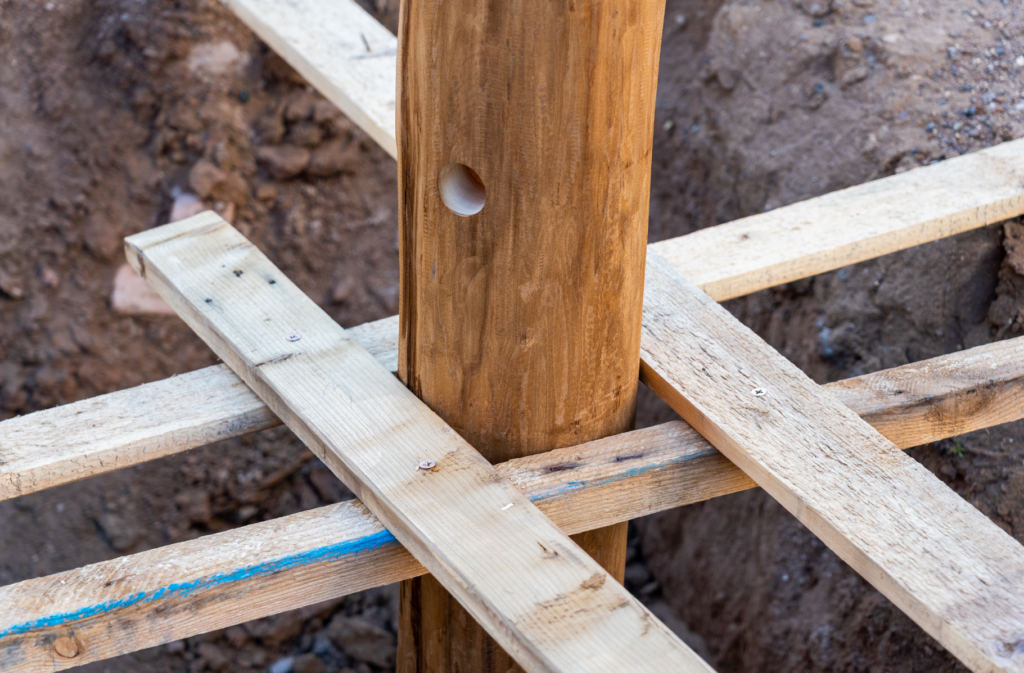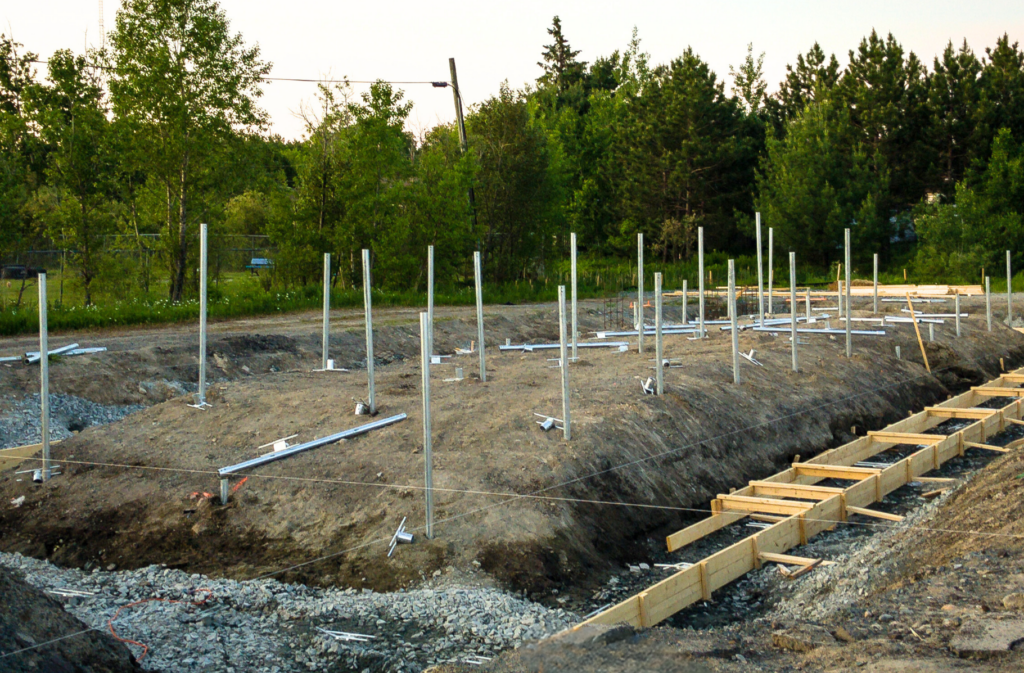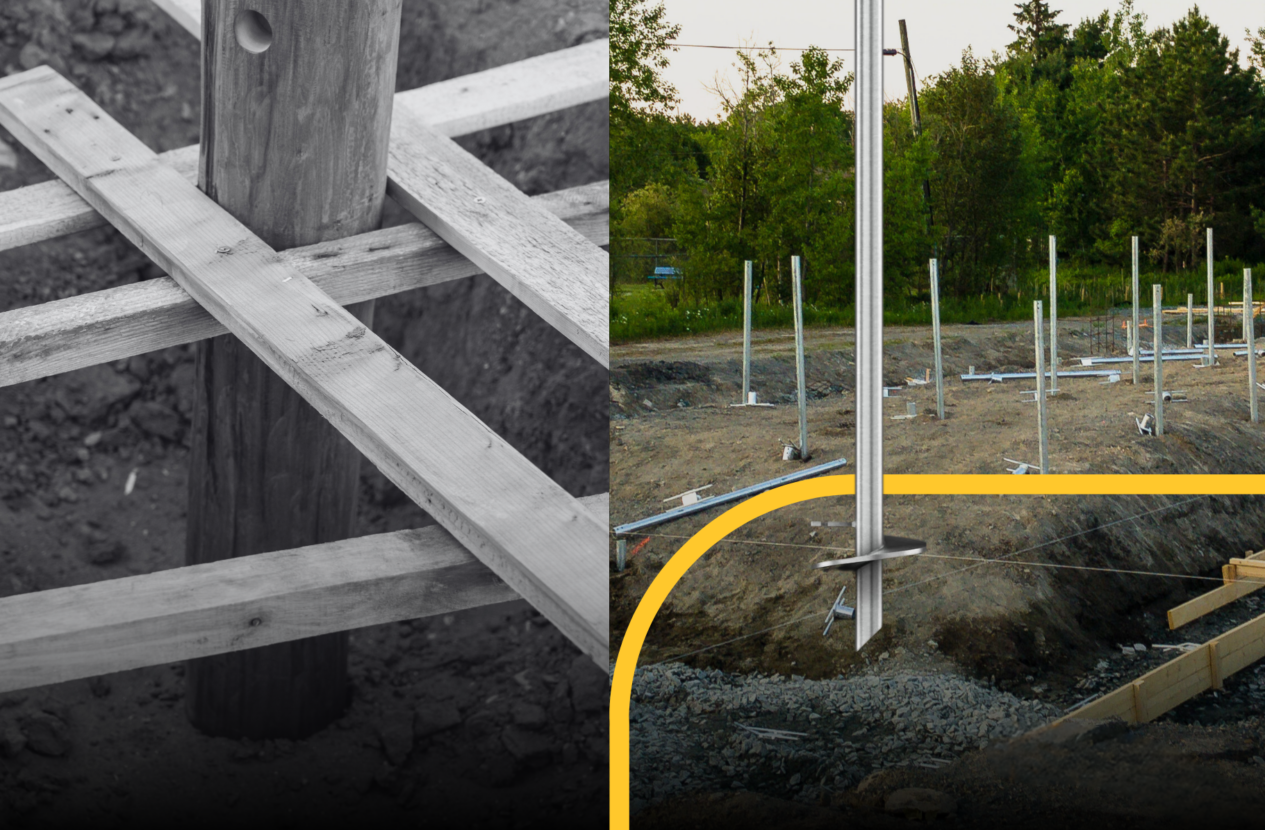Every solid construction begins from the ground up, and this rings especially true when choosing the foundation that will support your structure for decades to come.
The debate between using traditional wood piling foundations and technologically advanced helical pier foundations is not just about preference but about performance.
Let’s investigate how these foundational choices measure up, keeping an eye on why helical piers might just edge out of the competition.

Understanding Wood Piling Foundations
The concept of wood piling foundations is almost as old as construction itself. These timber piles, once driven deep into the ground, provide a sturdy base for structures to rest upon.
However, despite their legacy, they come with a list of potential issues:
Vulnerability to the Elements: Wood pilings are particularly susceptible to the forces of nature. Over time, exposure to moisture, extreme temperatures, and changing weather conditions can lead to:
- Rot and Decay: Wood is an organic material that can deteriorate when exposed to the elements, particularly moisture, leading to a loss of structural integrity.
- Insect Infestation: Termites and other wood-boring insects can compromise the strength of wood pilings, necessitating costly treatments or replacements.
- Fungal Growth: Fungi thrive in damp conditions, and wood pilings offer the perfect habitat, further accelerating decay.
Limited Durability: Compared to helical piers, wood pilings may have a shorter lifespan due to:
- Material Degradation: Even treated lumber can break down over time, which may require more frequent inspections and maintenance.
- Environmental Wear: Fluctuating groundwater levels, freeze-thaw cycles, and soil acidity can affect the lifespan of wood pilings.
Installation Challenges: The process of installing wood pilings can be fraught with challenges:
- Noise Pollution: The pile driving required to install wood pilings generates significant noise, which can be disruptive to nearby communities and wildlife.
- Vibration: The vibrations caused by driving piles into the ground can affect nearby structures, potentially causing damage or unsettling foundations.
- Soil Displacement: The installation of wood pilings can displace a considerable amount of soil, leading to changes in the landscape and potential erosion problems.
Sustainability Concerns: Wood pilings raise certain environmental issues, including:
- Deforestation: The production of wood pilings contributes to the cutting down of trees, which can impact forests and the habitats they support.
- Chemical Treatments: Wood pilings often require chemical preservatives to extend their life, which can leach into the soil and water, potentially harming the ecosystem.
Engineering Limitations: Wood pilings have certain limitations when it comes to supporting structures:
- Load-Bearing Restrictions: They may not be suitable for supporting larger, heavier structures due to their lower load-bearing capacity compared to steel helical piers.
- Length Limitations: There's a practical limit to how long wood pilings can be, which can restrict how deeply they can be set into the ground for stability.
Economic Considerations: The cost-efficiency of wood pilings might not always be as favorable as it seems:
- Maintenance Expenses: Regular inspections and treatments against rot, decay, and insects can add to the lifetime cost of using wood pilings.
- Replacement Costs: If wood pilings fail, replacing them can be an extensive and expensive undertaking.
Taking these disadvantages into account, it's clear why many in the construction industry are turning towards more resilient and durable alternatives like helical piers for their foundational needs.

Exploring Helical Pier Foundations
Now, let’s twist the conversation to helical piles—also known as screw piles or helical piers. These steel foundations are screwed into the earth and boast a bevy of benefits that make them suitable for a variety of construction scenarios.
Here’s why they are gaining the upper hand in the industry:
- Rapid Installation: Screw piles are renowned for their quick and efficient installation process, which can dramatically accelerate the timeline of any building project.
- Minimal Impact on the Landscape: The insertion of helical piles is a gentle affair, preserving the grace of the landscape by minimizing alteration and damage.
- No Excavation Required: Say goodbye to the cumbersome diggers and excavators. Helical piers slip into the earth with a clean precision that requires no excavation.
- Immediate Construction Post-Installation: Like a magician’s trick, as soon as the helical piles are in place, construction can commence without the typical waiting period for foundations to set.
- Perfectly Level Structure: With helical piers, achieving a level structure is all in a day's work, ensuring that the finished building stands straight and true.
- Ideal for Restricted Spaces: Tight spots and awkward construction sites are no match for the adaptable helical pier, which can maneuver into confined areas with ease.
- Year-Round Installation: Unlike season-dependent foundation methods, helical piles can be installed at any time of the year, unaffected by most weather conditions.
- Removable and Reusable: In a world where change is constant, these foundations can be unscrewed and relocated, ready to be used again, embodying sustainability.
- Low Environmental Footprint: Helical piers tread lightly on the earth, boasting a low environmental footprint and becoming a friend to eco-conscious builders.
- Suitable in All Soil Conditions: Whether it’s clay, loam, or sandy soils, helical piles hold their ground, offering unwavering stability across various geological backdrops.
- No Concrete Required: Eliminating the need for concrete not only speeds up the construction process but also sidesteps the environmental impact associated with its use.
The intrinsic benefits of helical pier foundations make them a standout choice for those who prioritize efficiency, sustainability, and reliability in their construction endeavors.
Conclusion
Wood piling foundations have served the test of time, but helical pier foundations stand out as the modern solution to today's construction challenges.
With their unparalleled adaptability, strength, and minimal environmental impact, helical (screw) piles offer a clear advantage.
They not only support a structure but also ensure its endurance in an ever-changing environment.
If the stability, durability, and ecological responsibility of your next project are of paramount importance, it's time to consider helical piers. Don’t hesitate to contact a professional helical pier-certified installer to discuss the benefits of helical piles for your construction needs.
With helical piers, you can build confidently, knowing your project rests on a solid and sustainable foundation.
À propos de GoliathTech
Since 2004, GoliathTech has been the most important manufacturer and installer in the helical (screw) pile industry worldwide. Our patented helical pile foundation system surpasses industry standards and has earned us multiple awards and prizes.
Carried out by certified installers, our quick installation process avoids excavation, which protects your landscape and allows you to begin building as soon as the piles are in the ground. Moreover, you can anchor GoliathTech’s helical pile foundations into any soil or space year-round. Installed deep into the ground, beneath the frost line, they solidly support the structure in even the most extreme conditions. Our technology guarantees that a helical (screw) pile foundation won't move or crack over time. Integrating both strength and know-how, GoliathTech offers the best anchoring solution to support your residential, industrial, commercial, and municipal projects. Trust the experience and expertise of GoliathTech for your foundation projects. Find a certified GoliathTech installer in your region or become a franchisee.
Share this Article


